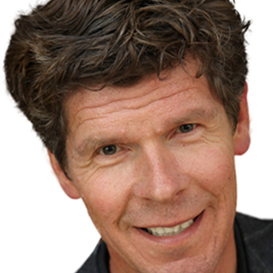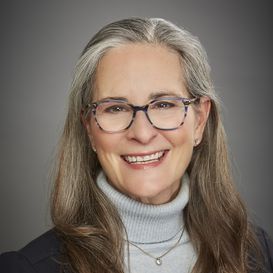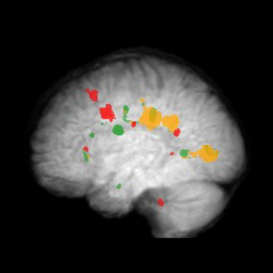
Focus on Austria
Tapping into innovative potential and using new knowledge for market growth
The Austrian Research Promotion Agency (FFG) is the national funding agency for industrial research and development in Austria. Research, development and innovation are central drivers for economic, technological and social development, and about 59% of FFG funding goes to projects with a strong focus on digitalisation. Michael Walch manages European and international research programmes at FFG. He explains how FFG supports instruments like ITEA to boost progress in Austria on the premise that businesses that undertake research grow faster, achieve higher export rates and create more employment than those who don’t. He is joined by Alexander Pogány of the Federal Ministry for Transport, Innovation and Technology (BMK).
Symbiosis between IT and industry
Austria has a lot of traditional sectors and with the emergence of digital technologies, also in the more traditional sectors, a major focus is to identify the added value that digital technologies can provide for these sectors, where there are many companies that can still benefit. Michael: “This is one of the initiatives we are keen to support. With the funding provided by FFG we are increasing the level of digitalisation within companies because there is good reason to believe that this creates added value. The IT industry in Austria is quite substantial in itself and there is always a certain buzz around the latest technologies like blockchain, augmented reality, artificial intelligence. As FFG we put on the table dedicated funding for software topics through various instruments like Competence Centers for Excellent Technologies where companies and research partners are focusing on application-oriented cutting-edge research.”
The merging of man and machine
“Austria has a very strong strategy and policy regarding digital technologies. There are many roadmaps on different topics, like quantum technologies, the space sector, 5G and more. We also support the strategies with concrete actions, like the competence centres I referred to earlier but also with different thematic funding programmes. We help execute these strategies on all the topics that seem relevant for competitive advantages, but we also have a focus on what we call digital humanism,” Michael explains. “I like to think that in Austria we put the human in the middle. We take a human-centred approach in many of our strategies and follow this through in concrete actions. I am convinced that this human-machine interface is becoming increasingly prominent. We already notice it now with smartphones, as we have extended our brain through the smartphone to access a lot of information. So some of the knowledge is no longer in our brain, it is on our devices. And we have integrated that in our own intellect in a way, in our own processes, how we communicate. So yes, the machine, artificial intelligence and the digital world will continue to merge with how humans communicate, interact, think and work. Research funding can help ensure that this happens in a sustainable way.” Alexander adds that “we are also trying to create, with AI and digital technologies, a sort of ecosystem, one that contributes to industry, mobility, energy, circular economy and cities. This is our main focus area of the ministry. With digital technologies, we try to contribute to this mission.”
Bottom-up and thematic funding schemes
In general, the FFG also provides bottom-up funding to companies. “So if any company has an innovative idea in the software sector, they can get funding. One of the main FFG programmes is a bottom-up programme where everything is defined by the company, including the topic, budget and runtime. Of course, here we rely on the applicant when it comes to defining the project scope, but this offers a lot of freedom to the companies to submit projects on software innovation. Also, if they have international partners, they can join them in an ITEA project with this bottom-up funding scheme. The benefit in addition to getting access to the innovation ecosystem in the international software sector is that cross-border projects can be funded at a higher intensity. Our bottom-up funding programme is targeted at single-firm applicants, but if there are multiple organisations from Austria working on a project, they might want to take a look also at the thematic funding programmes of FFG. Different calls in the thematic funding programmes address important economic or social topics which will shape our future lives. Activities of Austrian companies, universities, R&D institutions are supported by calls for projects in specific subject areas of ICT and digitalisation, interlinked with application fields and societal challenges. Through ITEA, submitted projects can also be embedded in transnational cooperation.”
The symbiosis between IT and traditional industry is one of Austria’s strengths.
Promoting the options
While there is broad awareness in Austria of the national policies and priorities, FFG is hard at work to promote all the options that are available to companies. “We are planning to organise the next international b2b Software Days for the software sector in Austria in early 2025, a biannual event. Last year’s edition (7th) also contained a slot for ITEA and can be seen as an example of activities that support international software innovation in Austria through ITEA. But,” as Michael comments, “at the end of the day, it’s up to the companies at some point to recognise the value of international R&D and follow up. A lot of companies rely on competence in the research sector, because it’s not always easy for companies, especially for smaller and medium companies, to have a dedicated person doing in-depth research for the fundamental knowledge they need, so they rely on research organisations in projects. And it can also go the other way around, that research organisations create a spin-off or spin-out from the university that can also submit an application for funding at FFG. And that happens quite often actually.”
Alexander is keen to point out that in bottom-up programmes, one of the criteria recently introduced is a sustainability criterion. Sustainability is a hot topic, Europe-wide in the large lighthouse projects and in Austria. “Projects have to address the Sustainable Development Goals. These would be the projects we are looking for.”
Visibility, connections, network
Eureka Clusters and specifically ITEA are internationalisation instruments that support Austria’s goals and priorities, Michael stresses. “If we have a partner from Austria and any other country like Germany, and they want to cooperate on R&D, they need an instrument, they need a framework, they need a network. Eureka provides this opportunity. It provides this network, the legal framework and so on. We have to have a reliable instrument in place to enable this European and even global cooperation.
The Clusters in particular create large or medium-sized projects. These projects have a lot of impact because they cover a broad value chain, the whole value chain even, and include big players and research organisations. Often there is a follow-up project. So it’s really a good way to create a return on investment for the funding provided. In the software sector in particular, it’s very important to have a standardisation because then you can roll out a solution more easily. So, also for small and medium enterprises, when they develop something in the software sector, if they use standards or if they define standards, then others can use their products, or they can use other products. So this is an ecosystem. To create these standards, you have to have a certain mass in the consortium to move something, because otherwise you will be ignored by the international community. I think this is one of the added benefits of the ITEA Cluster. And you are in the forefront of R&D, knowing what is out there. In fact, sometimes the companies applying for an ITEA Cluster project do not even care about the funding. They just want to be in the consortium. Now that is very rare because companies really like funding. But there are cases where companies participate self-funded just to be in the consortium, be part of the ITEA Community to be noticed and also to influence certain things. They gain visibility, connections, network.”
More information:
https://www.ffg.at/

Other chapters
Use the arrows to view more chapters

Editorial
By Jan Jonker

Country Focus: Austria
Tapping into innovative potential and using new knowledge for market growth

IT-V Medizintechnik
Achieving a better position in international innovation

ITEA Success story: PIANiSM
Pioneering predictive maintenance for a smarter future in manufacturing

Advancing gender equality in innovation
Insights for ITEA from Vinnova

ITEA Success story: EMPHYSIS
EMPHYSIS: Bridging the gap between digital simulation and embedded software with eFMI®

Community Talk with Jennifer Overbury
Smart project management in a technical domain

SME in the Spotlight: icometrix
Transforming neuroimaging with AI

End user happiness: Mad@Work
Digital solutions enhancing personal well-being and organisational success

